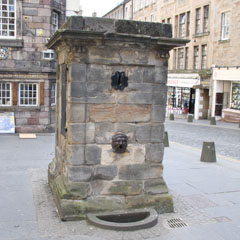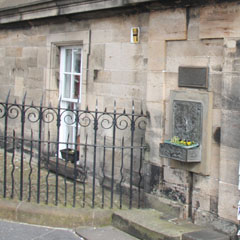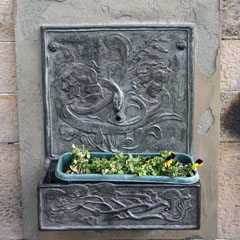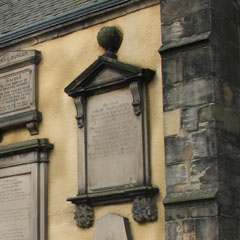555 Castlehill, Edinburgh EH1 2ND
This ornate drinking fountain marks the site on Castle Hill where the mathematician George Sinclair constructed a cistern to supply water to the city of Edinburgh in around 1675. The original reservoir was demolished to make way for a new, larger one in 1849. Sinclair was professor of Mathematics at the University of Glasgow from 1654 to 1666. In 1655 he made some very early descents in a diving bell off the Isle of Mull. He was not only a leading mathematician and engineer, but also an expert on demonology and author of Satan’s Invisible Works Discovered (c.1685).

The one surviving wellhead on the High Street, originally connected to Sinclair’s Castlehill cistern. It was designed by Sir William Bruce to provide water to the people of the Old Town and built in around 1675.




